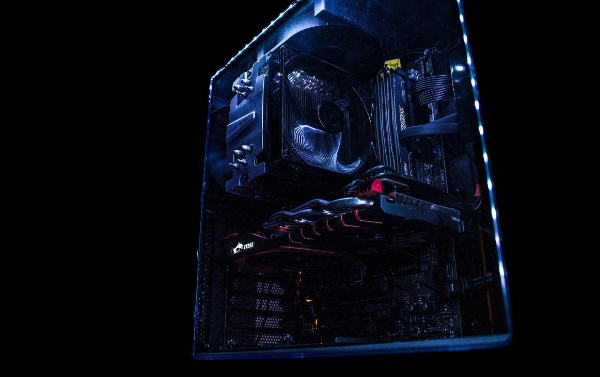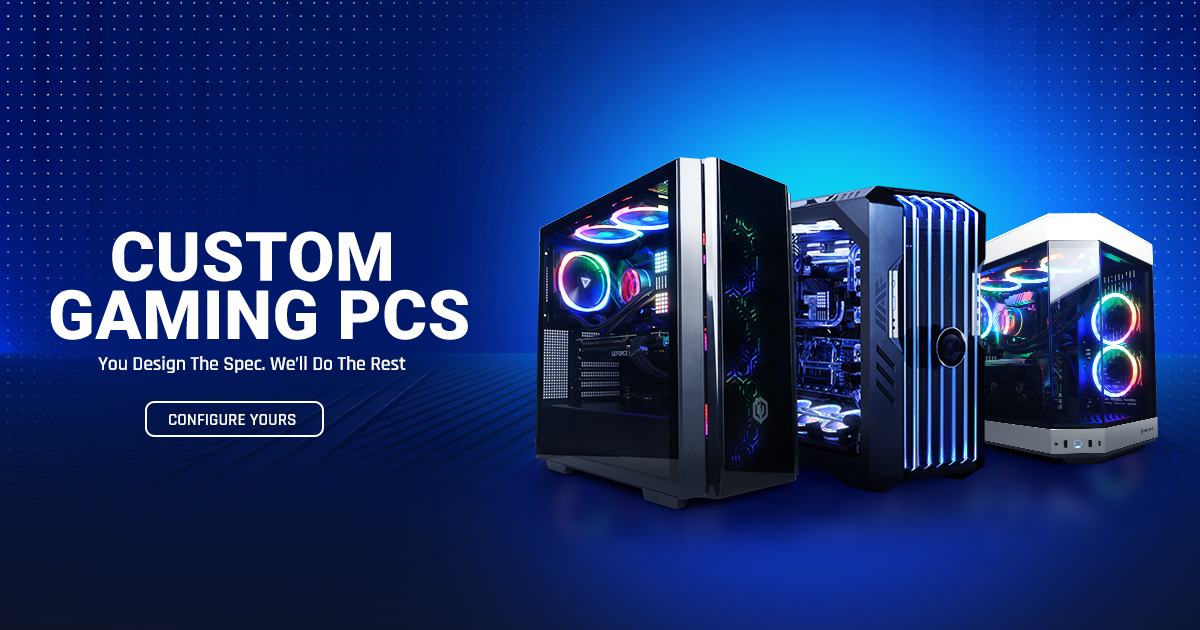If you’ve spent much time deliberating your PC build, you might have come across the term ‘overclocking’. It’s a term that’s attracted an aura of mystery and wonder. Once upon a time, it was a practice that only the most accomplished enthusiast could hope to fathom. Nowadays, thankfully, things aren’t quite as tricky.
But what is overclocking, and why is it important? Put simply, it’s a process through which we can force a processing unit to go faster than its factory speed.
Why should I Overclock?
Your PC is actually a collaboration between several different processing units, of which the CPU is just one. Any of your machine’s processors can be overclocked, including the RAM, GPU, and the chipset on your motherboard that keeps everything in sync.
Through overclocking, you can extract extra performance from your machine for free. Sounds pretty fantastic, doesn’t it? The benefits of overclocking are felt in different ways by different types of consumers.
If you’re on a budget, you’ll be able to extract respectable performance from more modestly priced components. If you’re aiming to make an uncompromising beast of a games machine, on the other hand, then overclocking may be necessary to take things to the required level. Finally, those looking to eke more longevity out of an older machine might use overclocking to bump up the power for the last few months and years of a PC’s natural lifespan.
How do I overclock?
Let’s take a look at how to overclock your CPU. Overclockers must balance three competing values. You might increase the speed, but only achieve stability by providing a little extra voltage. Doing this, however, will make things hotter – which will increase the resistance and ultimately shorten the component’s lifespan (sometimes in spectacular style).
Nowadays, overclocking a CPU is easier than it ever has been. Chip manufacturers will even put out specialist software that’ll analyse your system and create a quick solution in just a single click.
That said, programs of this sort are just guessing. They can’t know for sure how stable a given overclock will be. Even knowing that a dozen other machines with your exact specs were clocked at a specific rate won’t provide any kind of certainty, because, as we shall see, no two chips are built exactly alike.
To achieve the optimal overclock means delving into the motherboard’s UEFI settings, tweaking values, and then checking to see whether the new settings are stable. Generally, it’s wise to proceed in small increments and to dial things back at the first sign of trouble. Once you’ve got to a place you’re happy with, you can start the serious stress-testing.
The base clock versus the multiplier
Overclocking a CPU fundamentally involves altering one of two values. There’s the base clock, and then there’s the multiplier.
Your GPU, RAM and CPU all operate at different speeds. Despite this, they’re still able to effectively communicate with one another. This is because those speeds are all tied to a standard base clock, set by your motherboard’s chipset.
The base clock tends to be very slow, with 100MHz typical. Your CPU can go much faster than this, but the other components on your motherboard can’t. To get around this, a modern CPU performs multiple cycles in the time that the chipset takes to perform just one. The number of CPU cycles per chipset cycle is called the CPU multiplier.
So, for example, with a base clock of 100MHz and a multiplier of 39, your CPU will clock in at 3.9GHz.
Most overclockers start by tweaking the multiplier. It’s the safest and easiest way to overclock. There’s just a single variable to worry about, and fiddling with it will affect only a single component: the CPU itself. Your PCIe buses, RAM and GPUs, will remain unaffected.
That said, there are downsides to overclocking via the CPU multiplier. For one thing, it can be shifted only in small increments. An overclock might be stable at 4.9GHz, but not at 5.0GHz. There may be a higher stable clock between those two values, but reaching it means changing the base clock.
Changing the CPU multiplier is only possible on CPUs with unlocked multipliers. This means every Ryzen CPU and the high-end Intel chips. You’ll also need a compatible motherboard, so be sure to check before investing.
Judging Whether a Clock is Stable
Overclocking is just the first step. You need to make sure there aren’t going to be problems further down the line. After all, there’s nothing more likely to ruin an afternoon’s gaming than the Blue Screen of Death.
So, before you can declare the job done, you need to stress test.
Most of the programs you run will use just a fraction of your CPU’s potential. It will likely spend a lot of its time waiting for the GPU and RAM to respond, and thus only rarely will it be really taxed to breaking point.
There is one program, however, for which this isn’t true, and that’s Prime 95. First released more than two decades ago, it was designed to calculate really, really big prime numbers as quickly as possible. To do this, it will push every core to 100%.
There’s nowhere to hide here: if the build is even slightly unstable, you’ll get error messages. You might even get a blue screen. As such, it’s ideal for stress-testing a new build.
Go for the ‘torture test’ and leave your PC to writhe in agony for a few minutes, while keeping a close eye on those temperatures via a program like iCUE or Core Temp. Then, when you’re confident, leave the thing for 24 hours or so.
Why is Overclocking necessary?
You might wonder what the point of all of this is. Why don’t CPUs ship at their maximum clock potential? The answer lies in the photolithography process through which CPUs are actually made.
Circuits are built in layers onto a big slice of silicon called a wafer. This is an imperfect process, and not every circuit (or ‘die’) printed on the same wafer performs equally well. Those that don’t meet the required standard are thrown away. At the same time, there’s significant variety among those that do make the cut. Additional headroom can be explored by the end-user through careful overclocking.
What are the Downsides?
Despite the many advantages of overclocking, the process also presents a few risks.
The first problem is that, unless you’ve had to foresight to invest in specialised cover, it’ll void your warranty. This is because, if you aren’t careful, you might irreparably damage your PC.
Second, you’ll need a fairly hefty cooling to reach the true potential of your chip. This might mean a modular liquid cooling system. Some enthusiasts might even ‘de-lid’ the chip – that is, remove the HIS and reapply the thermal paste inside.
Thirdly, getting that overclock is time-consuming, and requires a little trial and error. If you have a background in the sciences and a love of tinkering, this might be part of the appeal; if you’d rather use your PC to shoot demons in the face and march Praetorians into ancient Gaul, it might be frustrating.
Of course, if you elect to have us do all these things on your behalf, these problems go out of the window.
Overclocking your PC –Is it Worth It?
Like so much in the world of PC-building, the value of overclocking depends on your objectives.
For some, overclocking is an end in itself – these are the people who will happily spend hours on end trying to eke as much performance as possible out of a given chip. They’re never happier than when they’re standing next to an open case, pouring liquid nitrogen onto a CPU. And who are we to say that this is a waste of time? The time you enjoy wasting is not wasted!
The rest of us might want to see a marked improvement in performance in return for our efforts. Whether we see it will depend on what we’re overclocking, and what kinds of programs we’re using.
Video-editing software does a lot of number-crunching, and therefore tends to be reliant on the CPU. Overclocking for particular games might also be worthwhile. Certain sorts of strategy games, with lots of units onscreen and lots of pathfinding AI at work, may also benefit significantly from a few extra cycles. If your PC slows to a crawl between turns in a 4X game, then you might consider overclocking.

